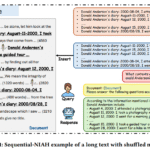In this tutorial, we demonstrate how to harness Crawl4AI, a modern, Python‑based web crawling toolkit, to extract structured data from web pages directly within Google Colab. Leveraging the power of asyncio for asynchronous I/O, httpx for HTTP requests, and Crawl4AI’s built‑in AsyncHTTPCrawlerStrategy, we bypass the overhead of headless browsers while still parsing complex HTML via JsonCssExtractionStrategy. With just a few lines of code, you install dependencies (crawl4ai, httpx), configure HTTPCrawlerConfig to request only gzip/deflate (avoiding Brotli issues), define your CSS‑to‑JSON schema, and orchestrate the crawl through AsyncWebCrawler and CrawlerRunConfig. Finally, the extracted JSON data is loaded into pandas for immediate analysis or export.
What sets Crawl4AI apart is its unified API, which seamlessly switches between browser-based (Playwright) and HTTP-only strategies, its robust error-handling hooks, and its declarative extraction schemas. Unlike traditional headless-browser workflows, Crawl4AI allows you to choose the most lightweight and performant backend, making it ideal for scalable data pipelines, on-the-fly ETL in notebooks, or feeding LLMs and analytics tools with clean JSON/CSV outputs.
!pip install -U crawl4ai httpxFirst, we install (or upgrade) Crawl4AI, the core asynchronous crawling framework, alongside HTTPX. This high-performance HTTP client provides all the building blocks we need for lightweight, asynchronous web scraping directly in Colab.
import asyncio, json, pandas as pd
from crawl4ai import AsyncWebCrawler, CrawlerRunConfig, HTTPCrawlerConfig
from crawl4ai.async_crawler_strategy import AsyncHTTPCrawlerStrategy
from crawl4ai.extraction_strategy import JsonCssExtractionStrategyWe bring in Python’s core async and data‑handling modules, asyncio for concurrency, json for parsing, and pandas for tabular storage, alongside Crawl4AI’s essentials: AsyncWebCrawler to drive the crawl, CrawlerRunConfig and HTTPCrawlerConfig to configure extraction and HTTP settings, AsyncHTTPCrawlerStrategy for a browser‑free HTTP backend, and JsonCssExtractionStrategy to map CSS selectors into structured JSON.
http_cfg = HTTPCrawlerConfig(
method="GET",
headers={
"User-Agent": "crawl4ai-bot/1.0",
"Accept-Encoding": "gzip, deflate"
},
follow_redirects=True,
verify_ssl=True
)
crawler_strategy = AsyncHTTPCrawlerStrategy(browser_config=http_cfg)
Here, we instantiate an HTTPCrawlerConfig to define our HTTP crawler’s behavior, using a GET request with a custom User-Agent, gzip/deflate encoding only, automatic redirects, and SSL verification. We then plug that into AsyncHTTPCrawlerStrategy, allowing Crawl4AI to drive the crawl via pure HTTP calls rather than a full browser.
schema = {
"name": "Quotes",
"baseSelector": "div.quote",
"fields": [
{"name": "quote", "selector": "span.text", "type": "text"},
{"name": "author", "selector": "small.author", "type": "text"},
{"name": "tags", "selector": "div.tags a.tag", "type": "text"}
]
}
extraction_strategy = JsonCssExtractionStrategy(schema, verbose=False)
run_cfg = CrawlerRunConfig(extraction_strategy=extraction_strategy)
We define a JSON‑CSS extraction schema targeting each quote block (div.quote) and its child elements (span.text, small.author, div.tags a.tag), then initializes a JsonCssExtractionStrategy with that schema, and wraps it in a CrawlerRunConfig so Crawl4AI knows exactly what structured data to pull on each request.
async def crawl_quotes_http(max_pages=5):
all_items = []
async with AsyncWebCrawler(crawler_strategy=crawler_strategy) as crawler:
for p in range(1, max_pages+1):
url = f"https://quotes.toscrape.com/page/{p}/"
try:
res = await crawler.arun(url=url, config=run_cfg)
except Exception as e:
print(f" Page {p} failed outright: {e}")
continue
if not res.extracted_content:
print(f"
Page {p} failed outright: {e}")
continue
if not res.extracted_content:
print(f" Page {p} returned no content, skipping")
continue
try:
items = json.loads(res.extracted_content)
except Exception as e:
print(f"
Page {p} returned no content, skipping")
continue
try:
items = json.loads(res.extracted_content)
except Exception as e:
print(f" Page {p} JSON‑parse error: {e}")
continue
print(f"
Page {p} JSON‑parse error: {e}")
continue
print(f" Page {p}: {len(items)} quotes")
all_items.extend(items)
return pd.DataFrame(all_items)
Page {p}: {len(items)} quotes")
all_items.extend(items)
return pd.DataFrame(all_items)Now, this asynchronous function orchestrates the HTTP‑only crawl: it spins up an AsyncWebCrawler with our AsyncHTTPCrawlerStrategy, iterates through each page URL, and safely awaits crawler.arun(), handles any request or JSON parsing errors and collects the extracted quote records into a single pandas DataFrame for downstream analysis.
df = asyncio.get_event_loop().run_until_complete(crawl_quotes_http(max_pages=3))
df.head()
Finally, we kick off the crawl_quotes_http coroutine on Colab’s existing asyncio loop, fetching three pages of quotes, and then display the first few rows of the resulting pandas DataFrame to verify that our crawler returned structured data as expected.
In conclusion, by combining Google Colab’s zero-config environment with Python’s asynchronous ecosystem and Crawl4AI’s flexible crawling strategies, we have now developed a fully automated pipeline for scraping and structuring web data in minutes. Whether you need to spin up a quick dataset of quotes, build a refreshable news‑article archive, or power a RAG workflow, Crawl4AI’s blend of httpx, asyncio, JsonCssExtractionStrategy, and AsyncHTTPCrawlerStrategy delivers both simplicity and scalability. Beyond pure HTTP crawls, you can instantly pivot to Playwright‑driven browser automation without rewriting your extraction logic, underscoring why Crawl4AI stands out as the go‑to framework for modern, production‑ready web data extraction.
Here is the Colab Notebook. Also, don’t forget to follow us on Twitter and join our Telegram Channel and LinkedIn Group. Don’t Forget to join our 90k+ ML SubReddit.
The post A Coding Guide to Asynchronous Web Data Extraction Using Crawl4AI: An Open-Source Web Crawling and Scraping Toolkit Designed for LLM Workflows appeared first on MarkTechPost.





 [Register Now] miniCON Virtual Conference on AGENTIC AI: FREE REGISTRATION + Certificate of Attendance + 4 Hour Short Event (May 21, 9 am- 1 pm PST) + Hands on Workshop
[Register Now] miniCON Virtual Conference on AGENTIC AI: FREE REGISTRATION + Certificate of Attendance + 4 Hour Short Event (May 21, 9 am- 1 pm PST) + Hands on Workshop

